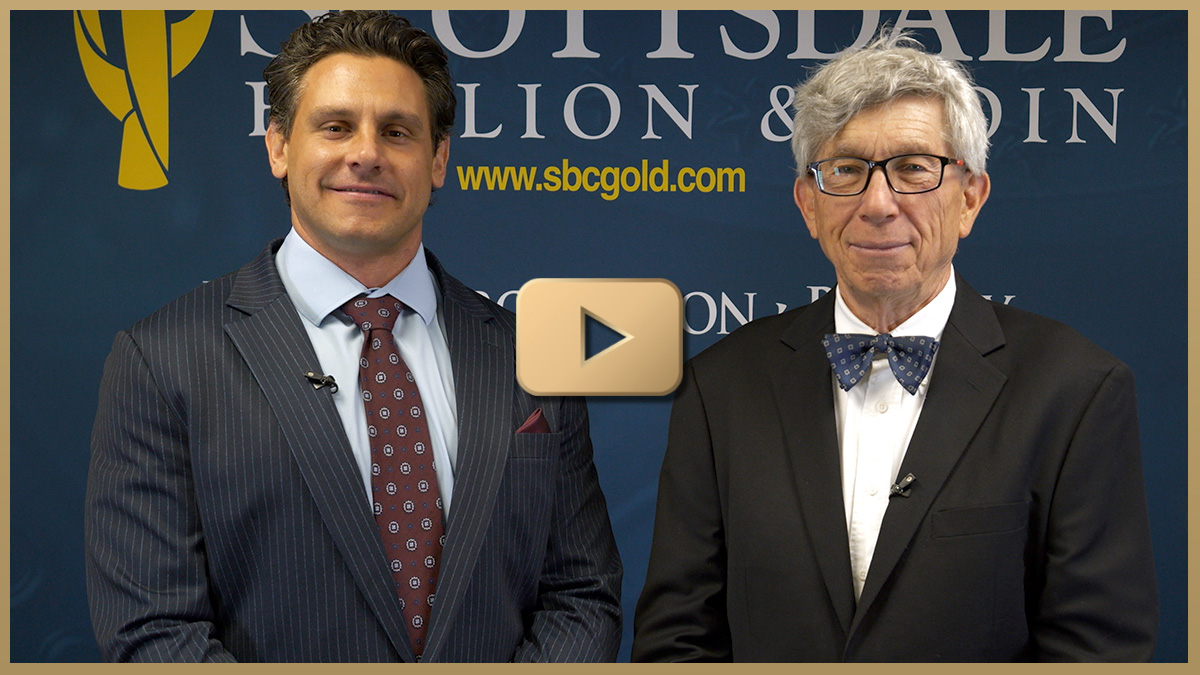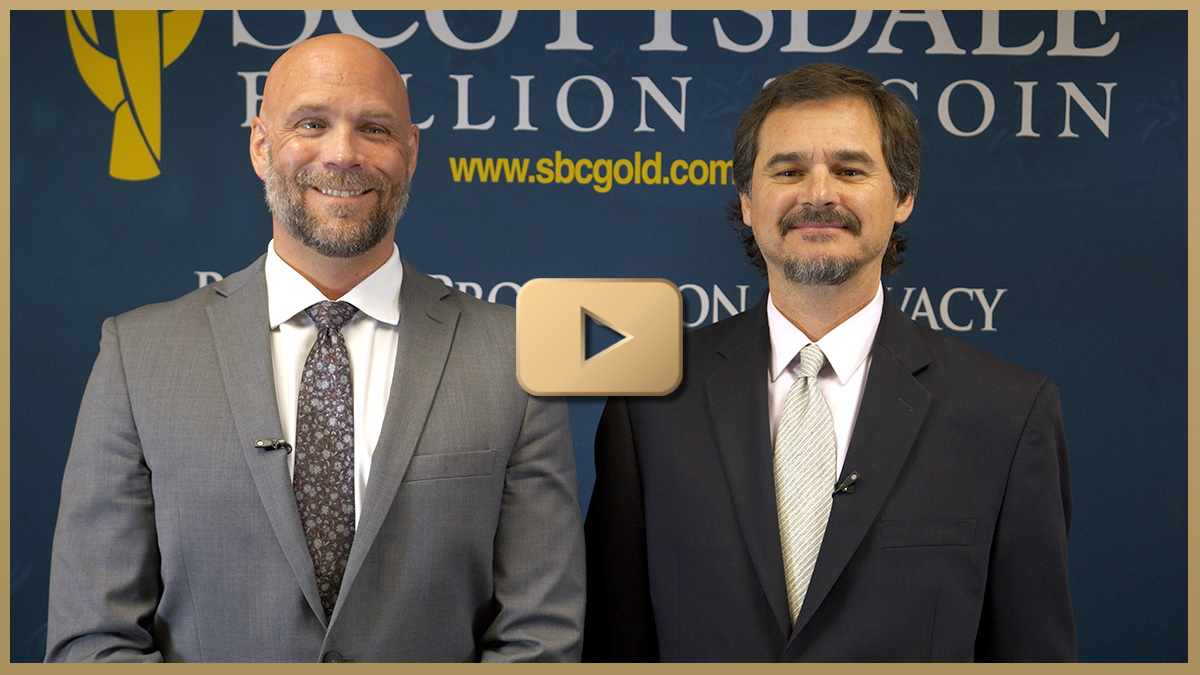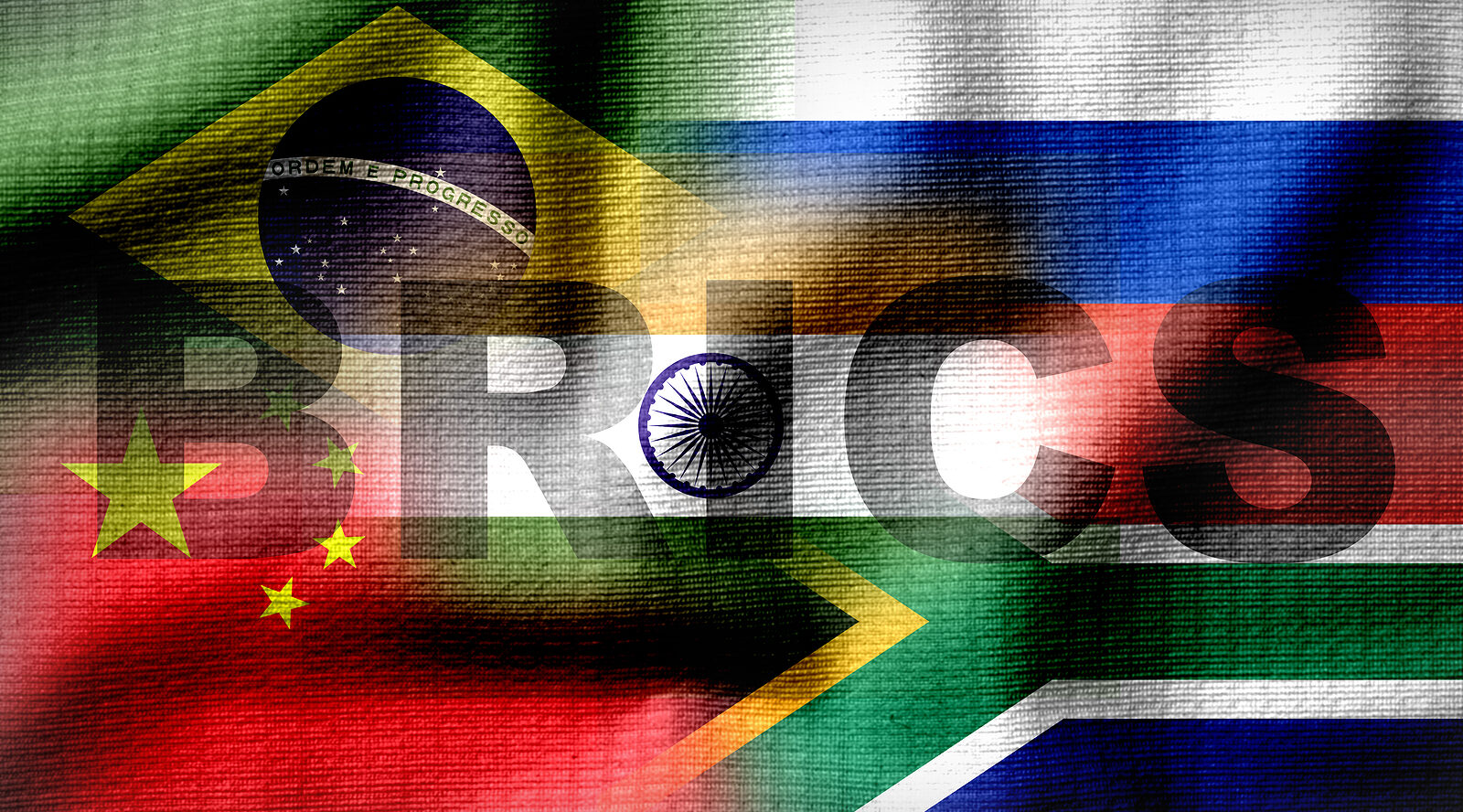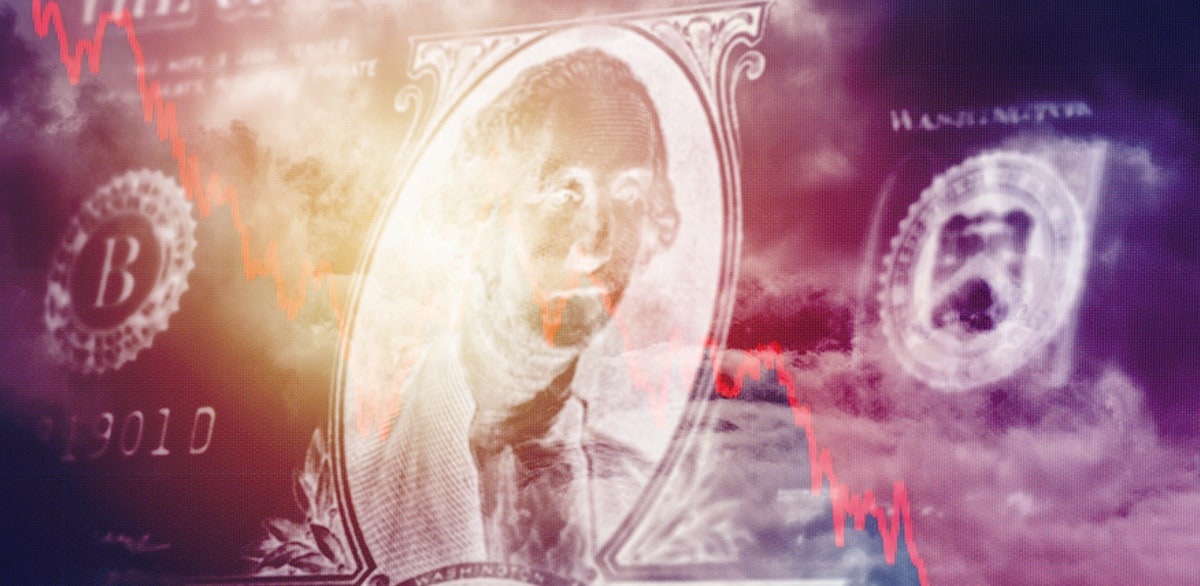
The US dollar has held a prominent position of authority and influence on the global stage for several decades. This status as the world reserve currency greatly benefitted the American economy and individual investors by securing the value of USD. Now, that global infrastructure is under assault through the process of de-dollarization. Countries are actively seeking independence from the US dollar as it loses value and prominence.
What Does De-Dollarization Mean?
De-dollarization is the replacement of the US dollar as the primary currency for international trade, reserve holdings, and fiat-backed assets. It involves countries decoupling from the dollar by reducing their dependence on the world reserve currency in their domestic and international affairs. Ultimately, the process of de-dollarization represents a waning demand for USD across the globe. To gain a clear understanding of this phenomenon, it’s important to know how the dollar earned its elite position.
How the Dollar Gained World Reserve Status
In the aftermath of World War II, leaders from 44 countries gathered to create a stable, secure, and long-lasting international monetary system. The resulting framework was outlined in the Bretton Woods Agreement which pegged the US dollar to gold and all other world currencies to the dollar.
When stagflation destroyed the gold standard, American leaders swiftly replaced it with liquid gold to maintain the dollar’s elite status. Oil became the new foundation of the global economy, and OPEC nations agreed to trade exclusively in USD. The Petrodollar, as it became known, remained virtually unchallenged until the past few years.

The Petrodollar: A Retrospective
How To Prepare For The Impending Dollar Failure
Get Report – It’s Free!Which countries are de-dollarizing?
De-dollarization is happening at all levels of the international community as governments begin seeing the dollar as a liability rather than an asset.
“We’ve seen an acceleration of countries trying to disassociate and decouple themselves from the US dollar.” – Sr. Precious Metals Advisor Damian White on The Gold Spot
Every country that actively moves away from the dollar further strengthens and reinforces the process of de-dollarization.
Here are some of the most economically influential countries leading the charge:
🇨🇳 China
China isn’t just enthusiastically cheering on the downfall of the dollar. It’s actively seeking to replace it. For the past few years, Xi Ji Ping has made decisive moves to increase China’s dominance geopolitically and economically. He successfully wedges the Yuan into any cracks within the dollar’s foundation as the world reserve currency. China is far from the singular cause of de-dollarization, but it’s certainly a principal benefactor.
🇷🇺 Russia
The Russian invasion of Ukraine resulted in an onslaught of fresh sanctions as the US and Europe tried to drain Putin’s war machine. These severe economic restrictions forced the Kremlin to find relief by working around the dollar’s stranglehold. This led to closer economic and political ties between Russia and China, giving both adversaries breathing room from the dollar’s influence.
BRICS Nations
The BRICS nations (Brazil, Russia, India, China, and South Africa) wield more collective economic might than the G7, underscoring the impact of their trade on the global economy. Earlier this year, Brazil’s President Lula da Silver kickstarted a movement within the group to establish their own currency to break free from the influence of the US dollar. This move would see over one-third of global GDP outside the sphere of the greenback.
🇸🇦 Saudi Arabia
The creation of the petrodollar wouldn’t have been possible without the cooperation and support of Saudi Arabia. Unfortunately, Biden’s cold-shoulder diplomacy has pushed a top Middle Eastern ally into the arms of the Chinese Communist Party. Now, Prince Mohammed bin Salman is seriously considering accepting Yuan as payment for oil in lieu of the petrodollar.
The speed of de-dollarization might be increasing, but the process is still unfolding. Staying up-to-date with the latest changes ensures you have the insights you need to make smart investment choices. Check out our de-dollarization timeline and subscribe to alerts to never miss a beat.
Learn more about the rise and fall of the dollar by requesting SBC’s free exposure report The Petrodollar: A Retrospective.
What is the effect of de-dollarization?
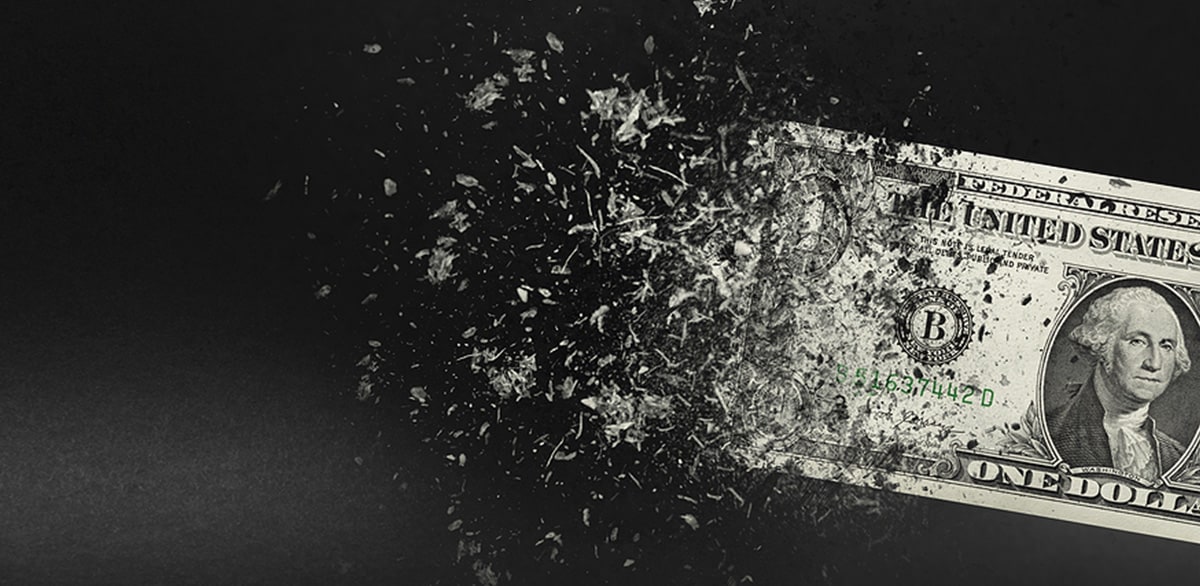
Understanding the factors behind de-dollarization is crucial, but that’s only half the battle. Investors should also know the impact of these changes.
Devaluing dollar
The dollar’s status as the world reserve currency created a positive feedback loop wherein every investment and trade conducted in USD increased its value. With countries scrambling to handle their transactions in another currency, the dollar’s value is going to take a serious hit.
Weaker paper assets
As mentioned before, the US economy benefits greatly when the global economy relies on the US dollar to function. Of course, this means the opposite is true too. Now, Americans are feeling the impact of de-dollarization as the value of fiat-backed assets suffers.
Greater market volatility
The disruptive influence of de-dollarization is raising a lot of unanswered questions, but there’s one guarantee: uncertainty. Any period of significant change leads to increased market volatility as investors try to limit their risk. The uncertainty caused by de-dollarization will cause ripple effects throughout the economy.
What De-dollarization Could Mean For Your Investments

De-dollarization poses a serious threat to your investments including stocks, bonds, ETFs, mutual funds, and all other fiat-linked assets. The dollar’s position as a world reserve currency has been an invisible boon to the US economy for decades. As that foundation suffers, paper assets weaken.
How to Protect Your Money from a Dollar Collapse
Where is your money safe in the event of a dollar collapse? Central banks have been answering that question loud and clear as they buy gold at record rates. Smart money, at the institutional and retail level, is pouring into hard assets as de-dollarization hits fiat-backed.
Gold, silver, and other precious metals have proven time and time again to offer reliable protection during periods of economic uncertainty. They tend to rise in value as mainstream assets sink. There’s no reason to think this time is any different.
Interested in learning if physical gold and silver can help you protect your money and achieve your investment goals? Request a FREE COPY of our insight Precious Metals Investment Guide today to learn more.


